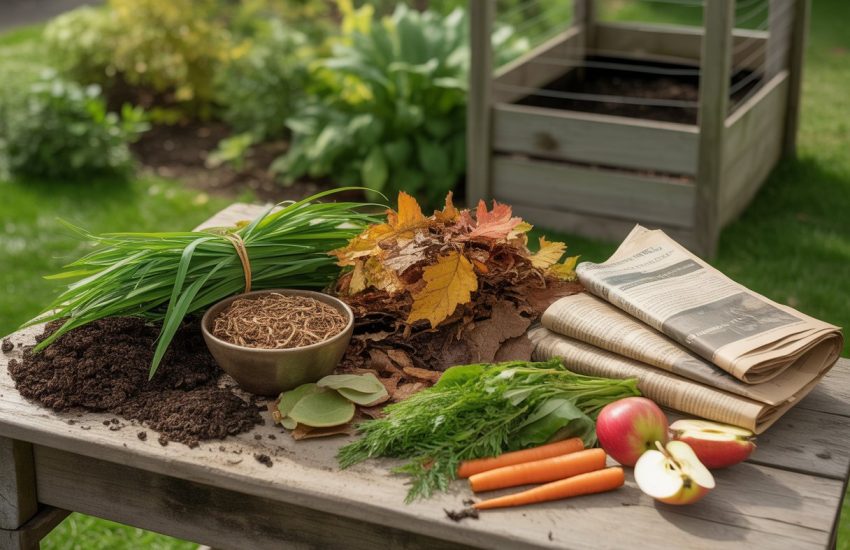Red Hot Poker Plants: A Guide to Growing and Caring for Them
Red hot poker plants, also known as Kniphofia or torch lilies, are a popular and striking perennial that can add a burst of color to any garden. These plants are native to Africa and are named for their tall, spiky flowers that resemble a fiery poker. They come in a range of colors, from bright red and orange to yellow and green.

One of the most appealing aspects of red hot poker plants is their hardiness. They are well-suited to a range of climates and can thrive in both hot and cold temperatures. They are also relatively easy to care for, requiring little maintenance beyond regular watering and occasional pruning. This makes them a great choice for gardeners of all skill levels.
In addition to their beauty and hardiness, red hot poker plants are also attractive to pollinators like bees and hummingbirds. This makes them a great choice for anyone looking to attract wildlife to their garden. Whether you’re an experienced gardener or just starting out, adding a few red hot poker plants to your garden is a great way to add color and interest to your outdoor space.
Planting and Care
Choosing the Right Location
When planting red hot poker plants, it is important to choose a location that receives full sun for at least 6 hours per day. These plants thrive in warm weather and need plenty of sunlight to grow and bloom.
Soil Preparation and Planting
Red hot poker plants prefer well-drained soil. Before planting, make sure to prepare the soil by adding compost or other organic matter to improve drainage and fertility. When planting, space the plants at least 18 inches apart to allow for proper growth and air circulation.
If planting in containers, choose a pot that is at least 12 inches deep and wide. Make sure the container has drainage holes to prevent waterlogging the soil.
Watering and Mulching
Water newly planted red hot poker plants regularly until they become established. After that, these plants are drought-tolerant and do not need frequent watering. However, during extended dry periods, it is important to water them deeply.
Mulching around the base of the plants can help retain moisture in the soil and suppress weed growth. Use a 2-3 inch layer of organic mulch such as shredded leaves or bark.
Overall, red hot poker plants are easy to care for and require minimal maintenance. With proper planting and care, these plants can provide a stunning display of vibrant blooms in your garden or container.
Growth and Maintenance
Red hot poker plants are relatively easy to grow and maintain. With proper care, they can thrive in a variety of environments. In this section, we will discuss the different aspects of growth and maintenance of these plants.
Pruning and Deadheading
Pruning and deadheading are essential for maintaining the health and appearance of red hot poker plants. Deadheading is the process of removing spent flowers to encourage the growth of new blooms. Pruning involves cutting back the plant to remove dead or damaged foliage.
To deadhead red hot poker plants, simply snip off the spent flower stalks as close to the base of the plant as possible. This will encourage the growth of new flowers. Pruning should be done in the spring before new growth appears. Cut back any dead or damaged foliage to promote healthy growth.
Fertilizing and Dividing
Red hot poker plants benefit from regular fertilization and division. Fertilizer should be applied in the spring and summer months. Use a slow-release fertilizer to provide a steady supply of nutrients to the plant.
Dividing should be done every three to four years to prevent overcrowding. To divide red hot poker plants, dig up the entire clump and separate the individual plants. Replant them in a well-draining soil mixture that contains compost or organic matter.
Overwintering and Protection
Red hot poker plants are hardy in USDA zones 5-9, but they may need protection during harsh winters. To protect the plant, cover it with a layer of mulch or straw. This will help to insulate the roots and protect them from freezing.
In areas with particularly harsh winters, red hot poker plants may need to be dug up and stored indoors until spring. To do this, dig up the entire plant and cut back the foliage. Store the plant in a cool, dry place until spring. Replant it in the garden once the danger of frost has passed.
Overall, red hot poker plants are a low-maintenance plant that can add a splash of color to any garden. With proper care, they can thrive for many years.
Propagation and Cultivation

Seed Propagation
Red hot poker plants can be propagated by seed, although this method is less common than division. Seeds should be sown in the spring in well-draining soil and kept moist until germination, which typically takes 2-3 weeks. Once seedlings have developed their second set of leaves, they can be transplanted to their permanent location.
It is important to note that red hot poker plants grown from seed may not be true to the parent plant, as they may exhibit genetic variation. Therefore, seed propagation is not recommended for those looking to maintain specific cultivars.
Division of Plants
The most common method of propagating red hot poker plants is through division. This involves separating the plant into smaller sections, each with its own set of roots and shoots.
The best time to divide red hot poker plants is in the spring, before new growth begins. Rhizomatous varieties can be divided by simply pulling apart the rhizomes, while those with tuberous roots should be carefully dug up and separated.
When dividing red hot poker plants, it is important to ensure that each section has enough roots to support its own growth. Divisions should be replanted at the same depth as the original plant and watered thoroughly.
Overall, red hot poker plants are relatively easy to propagate and cultivate, making them a popular choice for gardeners looking to add a splash of color to their landscape.
Pest and Disease Management

Common Pests
Red hot poker plants are generally hardy and pest-resistant, but they can still fall victim to a few common pests. Slugs and snails can be a problem, particularly in wet conditions. These pests can be controlled by using slug pellets or by handpicking them off the plants.
Thrips are another pest that can cause damage to red hot poker plants. These tiny insects suck the sap from the leaves and flowers, causing them to turn brown and die. Thrips can be controlled by using insecticidal soap or neem oil.
Disease Prevention
One of the main diseases that can affect red hot poker plants is root rot. This is caused by overwatering or poor drainage, which can lead to the roots becoming waterlogged and rotting. To prevent root rot, make sure the soil is well-draining and avoid overwatering the plants.
Another disease that can affect red hot poker plants is an invasive fungus called Phytophthora. This fungus attacks the roots and can cause the plant to wilt and die. To prevent Phytophthora, make sure the soil is well-draining and avoid planting red hot poker plants in areas prone to flooding.
Overall, red hot poker plants are relatively low-maintenance and easy to care for. By following these simple tips for pest and disease management, gardeners can enjoy these beautiful plants in their gardens for years to come.
Wildlife and Ecological Benefits

Red hot poker plants are not only visually stunning, but they also have many benefits for wildlife and the local ecosystem. Here are some of the ways that these plants can help support the environment.
Attracting Pollinators
Red hot poker plants are a great choice for gardeners looking to attract pollinators such as bees, butterflies, and hummingbirds. The long, tubular flowers of the plant are rich in nectar, making them a popular food source for these creatures. By planting red hot poker plants, gardeners can help support local pollinator populations, which are essential for the health of many ecosystems.
Supporting Local Ecosystems
Red hot poker plants are also beneficial for local ecosystems in other ways. They are easy to grow and require minimal care, making them a great choice for gardeners who want to create a low-maintenance, yet beautiful garden. Additionally, these plants are deer resistant, which means that they are less likely to be eaten by local wildlife.
Overall, red hot poker plants are a great choice for anyone looking to add some color and life to their garden while also supporting local wildlife and ecosystems. Whether you are a seasoned gardener or a beginner, these plants are easy to grow and can provide years of enjoyment.
Frequently Asked Questions

How should I care for red hot poker plants to ensure optimal growth?
Red hot poker plants prefer full sun and well-draining soil. They require regular watering, especially during hot and dry periods. Fertilizer can be applied in the spring and summer months to promote growth and flowering. It is important to remove spent blooms and dead foliage to prevent disease and pests.
When is the typical bloom time for red hot poker plants?
Red hot poker plants typically bloom in mid to late summer, with some varieties blooming into the fall months. The exact bloom time can vary depending on the climate and growing conditions.
What are the common reasons for a red hot poker plant not flowering?
A red hot poker plant may not flower if it is not receiving enough sunlight, water, or nutrients. It may also be affected by pests or disease. Overcrowding and lack of proper maintenance can also impact flowering.
How frequently can I expect red hot poker plants to bloom?
Red hot poker plants can bloom once or twice per year, depending on the variety and growing conditions. With proper care and maintenance, they can continue to bloom for several years.
What is the recommended procedure for dividing red hot poker plants?
Red hot poker plants can be divided in the spring or fall months. The plant should be dug up and the root ball separated into smaller sections. Each section should have several healthy leaves and roots. The new sections can be replanted in well-draining soil and watered thoroughly.
Can red hot poker plants become invasive if not properly managed?
Red hot poker plants can become invasive if they are not properly managed. They can spread quickly and take over other plants in the garden. It is important to regularly remove spent blooms and dead foliage, and to divide the plant every few years to prevent overcrowding.



When composting the stalks of my red hot poker plants should I compost the seed heads as well
Yes, you can compost the seed heads of your red hot poker plants. -Plant Native Team